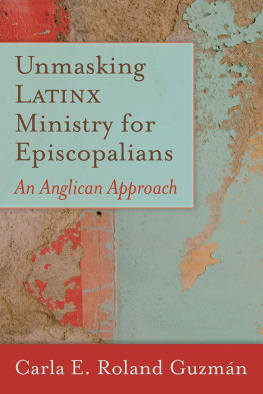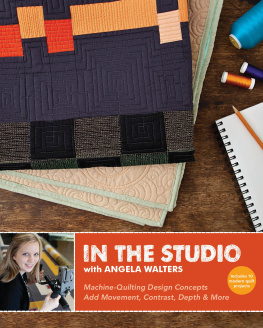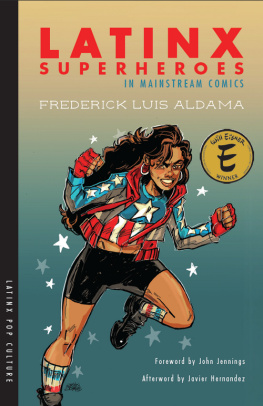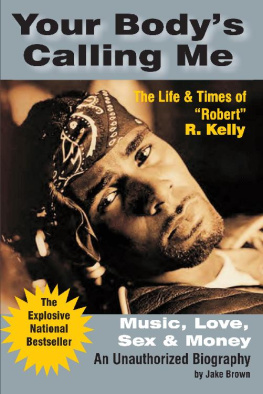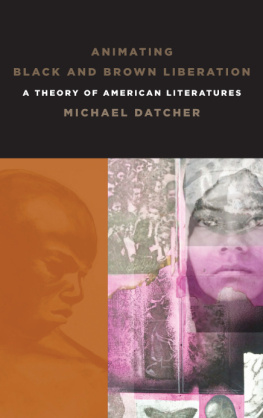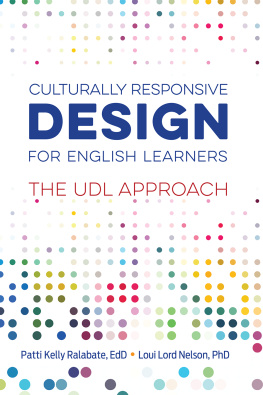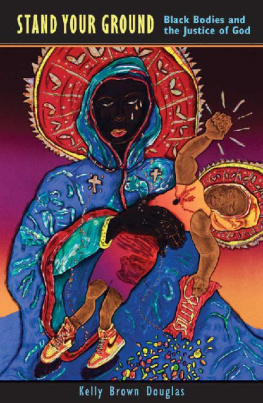Kelly Walters - Black, Brown + Latinx Design Educators
Here you can read online Kelly Walters - Black, Brown + Latinx Design Educators full text of the book (entire story) in english for free. Download pdf and epub, get meaning, cover and reviews about this ebook. year: 2021, publisher: Princeton Architectural Press, genre: Religion. Description of the work, (preface) as well as reviews are available. Best literature library LitArk.com created for fans of good reading and offers a wide selection of genres:
Romance novel
Science fiction
Adventure
Detective
Science
History
Home and family
Prose
Art
Politics
Computer
Non-fiction
Religion
Business
Children
Humor
Choose a favorite category and find really read worthwhile books. Enjoy immersion in the world of imagination, feel the emotions of the characters or learn something new for yourself, make an fascinating discovery.

- Book:Black, Brown + Latinx Design Educators
- Author:
- Publisher:Princeton Architectural Press
- Genre:
- Year:2021
- Rating:4 / 5
- Favourites:Add to favourites
- Your mark:
- 80
- 1
- 2
- 3
- 4
- 5
Black, Brown + Latinx Design Educators: summary, description and annotation
We offer to read an annotation, description, summary or preface (depends on what the author of the book "Black, Brown + Latinx Design Educators" wrote himself). If you haven't found the necessary information about the book — write in the comments, we will try to find it.
Black, Brown + Latinx Design Educators — read online for free the complete book (whole text) full work
Below is the text of the book, divided by pages. System saving the place of the last page read, allows you to conveniently read the book "Black, Brown + Latinx Design Educators" online for free, without having to search again every time where you left off. Put a bookmark, and you can go to the page where you finished reading at any time.
Font size:
Interval:
Bookmark:
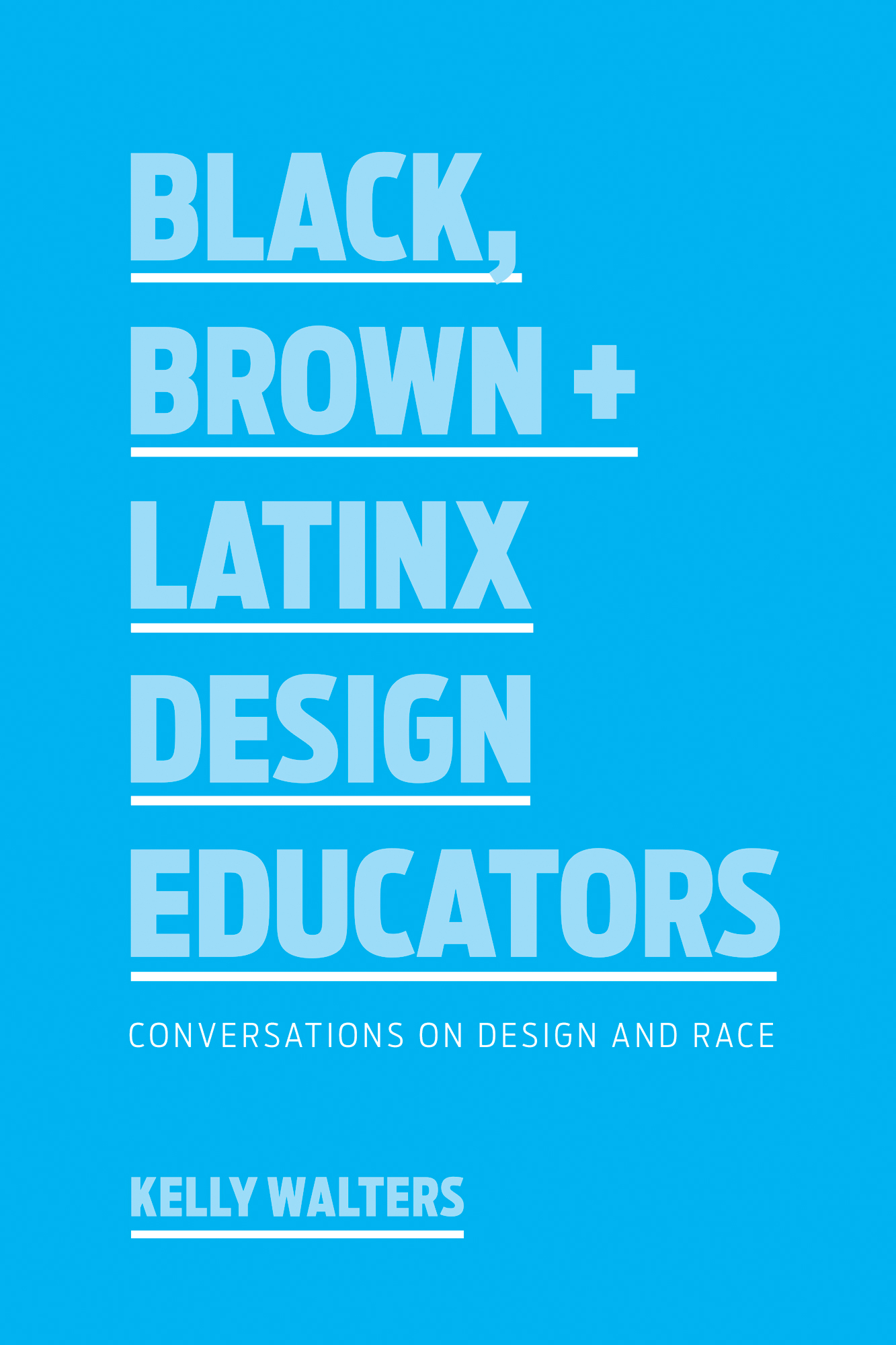

Throughout my career as a design educator, I have consistently engaged with questions related to graphic design and race. Many of the concerns I faced racially as a studenthow my design work might be perceived, how racial content is addressed in design, how to find my place in the design communityhave continued on in other forms as an educator. Some of the most urgent questions for me right now are: What are the experiences of Black, Brown, and Latinx graphic design educators in college classrooms today? How does our racial identity influence our work? What are the challenges and strengths of teaching graphic design at minority-serving institutions, predominantly White institutions, or historically Black colleges and universities (HBCU)? Most importantly, what does being Black, Brown, and Latinx mean in the context of the United States or in the field of graphic design?
I decided to unpack these questions with a group of design educators in preparation for a panel at the 2020 College Art Association Conference (CAA). I led interviews with eleven design educators, many of whom would eventually participate in the CAA panel, in order to learn more about their unique insights into this field. As a way to share my own path, I was interviewed by design educator Anne H. Berry. It was critical for me to see what similarities we shared as graphic design educators and as members of the Black, Brown, and Latinx communities. Our conversations got real. The vulnerability and openness of our discussions led to richsometimes difficultexchanges around the shared challenges of growing up as people of color and the paths that led us to become the designers and educators we are today. Patterns emerged that revealed perspectives on navigating the immigrant experience, growing up in predominantly White spaces, facing financial considerations that influenced the types of colleges or universities we were able to attend, experiencing challenges in undergraduate and graduate design programs, handling toxic work environments, and defying parental expectations.
A secondary aim of this book is to foster a dialogue around the specific observations of Black, Brown, and Latinx design educators who teach at a variety of institutions: private art schools, small liberal arts colleges, large public research universities, community colleges, or minority-serving institutions and HBCUs. Knowing the type of institution offers insight into the privileges and challenges that come with such affiliations and how they influence ones trajectory. When coupling the institution with the regional contexts each designer hails from (Connecticut, Tennessee, Florida, Toronto, and India to name a few) one can clearly picture how these educators might be racially perceived in their design communities. The intricacies of race as it takes form in the inner city versus a rural environment or the suburbs create vastly different experiences for people of color in design.
The designers in this book also represent a cross section of Black, Brown, and Latinx communitiesAfrican American, Jamaican, Indian, Pakistani, Puerto Rican, Dominican, Mexican, Brazilianand some have multiracial backgrounds. This is only a sampling of the many racial and ethnic communities that see themselves as Black, Brown, or Latinx and is not a monolithic view of people of color, a term that has its own complications. The facets of our identity that connect to the languages we speak, our socioeconomic standing, or our gender identity create additional cultural intersectionsintersections that reflect characteristics of how marginalization, social hierarchies, and colorism take place within our ethnic backgrounds.
The stories and insights shared hereinterwoven with images of objects that maintain cultural significance for each design educator and quotes that resonate with their understanding of identity and representationare imperative for both students and emerging academics, especially Black, Brown, and Latinx designers, to hear. They will see aspects of themselves in these interviews. It is essential for the design field to engage in deeper conversations about how race, racial identity, and design education intersect and influence the way designers of color may position themselves in the world. Our perspectives need to be shared in order to serve as reference, inspiration, guidance, and validation for the many Black, Brown, and Latinx designers who are studying and working in the field today. The future of design and design education depends upon building an archive of reflective and introspective representations. The stories from the Black, Brown, and Latinx designers in this book offer necessary discourse from individuals who are making change, expanding definitions in the field, and redefining the design landscape for all who follow after them.
Kelly Walters
October 23, 2020
DAVID JON WALKER is an African American designer and Assistant Professor of Graphic Design at Austin Peay State University in Clarksville, Tennessee. He is principal of Rhealistic Design, a small design consultancy that specializes in branding and collateral for special events for nonprofit entities and that partners with small minority marketing agencies to help build their portfolios. Before joining the faculty at Austin Peay State University, Walker taught at Middle Tennessee State University.

DAVID JON WALKER

Typographic layout for the 2019 Senior Design Show at Austin Peay State University. Design by David Jon Walker.
Can you share a little bit about where youre from and how you got into design?
Im from Nashville, Tennessee, and I went to an HBCU for undergradTennessee State University. We didnt have a traditional design curriculum. Our only design classes were Desktop Publishing, Introduction to Web Design, and Introduction to Photography, all under the studio art degree. I came out of the program in 2004. I had a professor, Dr. Herman Beasley, who gave more lab access and equipment to students who showed the initiative to learn more. At the time, the art department had just bought and installed InDesign, and Id seen a couple of folks dabbling in Flash, so I decided to learn the software. We were using Photoshop, Illustrator, PageMaker, and Macromedia Flash in the courses. Some of our projects consisted of laying out magazines and creating editorial designs, but there wasnt any real depth of instruction in terms of constructing how those things should look or feel. We did comparative research to figure out on our own how to produce pieces that actually looked usable.
For me, attending an art program at an HBCU without a specific design track meant a lack of exposure to the design luminaries we currently look up to today. Album artwork and party flyer design were very prevalent and prominent on campus at the time. Publications that I saw at church rounded out the extent of my critical design exposure. Even though as students we were exposed to book covers and magazine ads in design practice, the curriculum in my program did not prepare us to go out and get design jobs.
After graduation, I interned at a larger church here in Nashville with John Girton, a design professional who was an in-house creative and local entrepreneur. He taught me so much more than what I had learned in school, as far as how to utilize design software collaboratively and how to view design critically. As a start, he gave me a strong introduction to typography and how it worked, including the variation of weight within a font and the science behind design decisions. That was basically my creative safe space at the time, so I started producing design work for actual clients under him. Following that opportunity, I landed my first large freelance job at my alma mater, working with the media relations department to produce billboards, magazine ads, and whatever else they needed, or simple stuff like T-shirts. Nothing complex, no real visual system building outside of making sure that everything matched aesthetically if there was a campaign. I kept them as a client for a couple of years and then felt that my portfolio was strong enough to apply to graduate schools. Upon being accepted into and attending graduate school, I learned about AIGA, and this was my first exposure to being around people who had similar interests in design and life pursuits.
Next pageFont size:
Interval:
Bookmark:
Similar books «Black, Brown + Latinx Design Educators»
Look at similar books to Black, Brown + Latinx Design Educators. We have selected literature similar in name and meaning in the hope of providing readers with more options to find new, interesting, not yet read works.
Discussion, reviews of the book Black, Brown + Latinx Design Educators and just readers' own opinions. Leave your comments, write what you think about the work, its meaning or the main characters. Specify what exactly you liked and what you didn't like, and why you think so.

